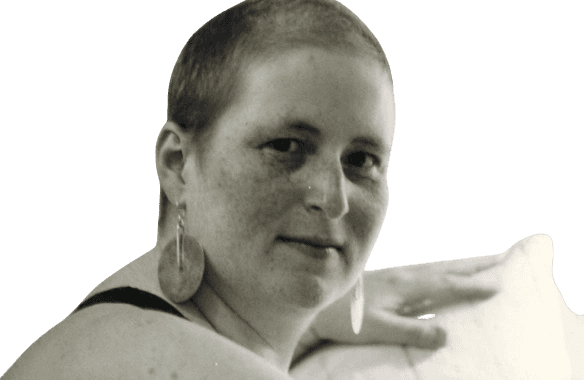Life and achievements
Early life
Eve Kosofsky Sedgwick was born on May 2, 1950, in Dayton, Ohio, but grew up in Bethesda, Maryland, in a Jewish household. She was a bright child, and after her education up to high school, she proceeded to Cornell University to study English literature and was among the first women to be selected to join the Telluride House.
Sedgwick received her Ph.D. from Yale University, and one of her teachers was literary critic Allan Bloom. Her first scholarly writing was in a conventional literary criticism, her subject being the Gothic novel. But she soon started building up her critical approach to look at the subtext and decode the social etiquette beneath English literature. Her first academic positions were at Hamilton College, Boston University, and Amherst College, where she started to analyze how gender and sexual norms are inscribed in texts.
Despite this, Sedgwick's thinking evolved in the mid-1980s when she began to focus more on queer theory. Between Men was her first substantial contribution to this study area, and the book discussed how homophobic culture's notions shaped male-male relationships in English literature. This book was groundbreaking, as it explained how culture and society influence how we perceive desire.
It was the start of Sedgwick's career as a prominent queer theorist, which would progress with her other publication, Epistemology of the Closet. In these works, she explored how the dichotomized concepts of homo/heterosexuality and male/female erase the multiple possibilities of sexual and gendered subjectivity.
Legacy
Eve Kosofsky Sedgwick is best known for being one of the pioneers of queer theory, a direction that is expanding its impact in the human sciences to this day. Her impressive books, especially Epistemology of the Closet, fought for the diversity of the sexual subject and the absurdity of the dichotomy of thinking. Her notion of the "closet" as the primary architecture of gay oppression has now constituted the very framework for analyzing how sexual subjects are constructed in both the public and the private realms.
Sedgwick's employ of literary criticism, cultural critique, and self-narration thus turned her work into a versatile instrument that could be useful in and applied to various fields.
Sedgwick was also involved in affect theory, a realm of study that narrates how emotion or feeling works in relation to subjectivity and power. Her later works, such as Touching Feeling, explore other aspects of identity, that is, the affective dimensions of pedagogy. In this work, she developed the idea of reparative reading, a process that allows concentrating not on the defects of the texts but on their therapeutic characteristics.
This work was taken seriously inside the classroom and extended to the broader society, with Sedgwick's work laying profound impacts on discourses of gender, sexuality, and identity. She was a strong supporter of gay rights and regularly discussed cases of injustice. For instance, her work during the AIDS crisis helped to reveal how the prejudices of society regarding sex affected the medical and political approaches towards the disease.
Sedgwick passed on in 2009, but her thoughts are still influential in discussions about identity, power, and the politics of sexuality today.
Milestone moments
Oct 16, 1985
Publication of Between Men
In 1985, Sedgwick published Between Men: Modern Male Homosocial Desire in English Literature, a study on male relations in literature and the impact of social concerns about homosexuality on such ties.
This work coined the phrase homosocial desire, explaining nonsexual male relationships with other men dictated by societal homosexual repression.
This altered the study of gender and sexuality in literature.
It was a significant step in queer theory and established Sedgwick as one of the pioneers of the field and helped shape the study of gender and sexuality for the next several decades.
Jan 10, 1930
Publication of Between Men
In 1985, Sedgwick published Between Men: Modern Male Homosocial Desire in English Literature, a study on male relations in literature and the impact of social concerns about homosexuality on such ties.
This work coined the phrase homosocial desire, explaining nonsexual male relationships with other men dictated by societal homosexual repression.
This altered the study of gender and sexuality in literature.
It was a significant step in queer theory and established Sedgwick as one of the pioneers of the field and helped shape the study of gender and sexuality for the next several decades.
Aug 20, 1991
The Controversy over 'Jane Austen and the Masturbating Girl'
Sedgwick's "Jane Austen and the Masturbating Girl", published in 1991, was highly criticized and debated in both academic and public domains because of its provocative title and the author's desire analysis of female sexuality in Austen's novels.
The essay contrasted female suffering in Austen's novels with the medical treatment of women's masturbation in the same period, as the two were ways through which women's sexuality was policed.
This essay became the subject of the 1990s' 'culture wars', pointing to Sedgwick's desire to transgress as well as to question the norms of sexuality.
Apr 17, 1993
Publication of Tendencies
In 1993, Sedgwick published Tendencies, a collection of essays on queer performativity and AIDS activism, which established her as a leading theorist of sexuality and gender.
In this work, Sedgwick took up the term queer in its most extensive sense as a category that refuses definition around sexuality or gender, thus broadening the reach of queer theory.
This work demonstrated Sedgwick's increasing role as a leading figure in queer theory and her concern with issues of the present, such as the AIDS epidemic.
